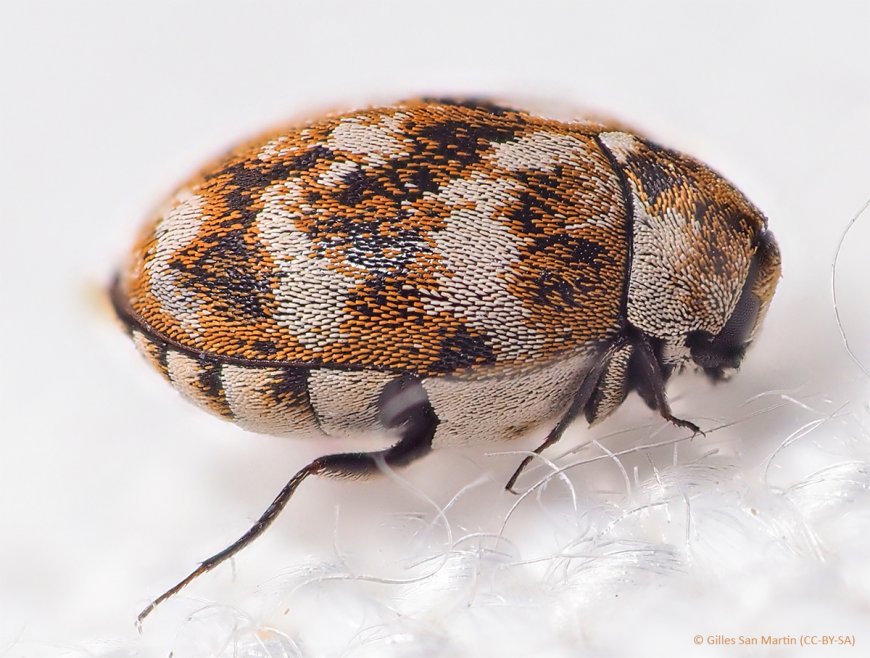How to Prevent a Beetle Infestation
These insects can cause significant damage and therefore, it becomes vital to consider pest control Cranbourne in this regard.

Beetle infestations can be a major headache for a lot of people. These insects can cause significant damage and therefore, it becomes vital to consider pest control Cranbourne in this regard.
In this blog post, we will understand various aspects of beetle prevention and control. Let's get started!
Understanding Beetles and Their Habits
Beetles belong to the order Coleoptera, which is the largest order of insects, with over 350,000 known species. While not all beetles are harmful, certain species can become pests when they invade homes, gardens, and agricultural areas. Common beetles that can cause problems include:
1. Carpet Beetles: These beetles are known for damaging fabrics, carpets, and stored food products. They are small, oval-shaped insects that can be black, brown, or patterned.
2. Powderpost Beetles: These beetles attack wood and can cause extensive damage to wooden structures and furniture. They bore tiny holes in wood, leaving a powdery residue behind.
3. Japanese Beetles: These beetles are notorious for feeding on a wide range of plants, including ornamental shrubs, trees, and crops. They have a distinctive metallic green body with copper-colored wings.
4. Ladybugs (Ladybird Beetles): While ladybugs are generally beneficial as they feed on aphids and other pests, they can become a nuisance when they swarm indoors during certain times of the year.
5. Weevils: These beetles are known for infesting stored grains and pantry items. They have a characteristic elongated snout and can cause significant damage to food supplies.
Signs of a Beetle Infestation
Recognizing the signs of a beetle infestation early can help you take prompt action to prevent further damage. Common signs include:
1. Visible Beetles: Seeing live beetles indoors or in your garden is an obvious sign of an infestation. Pay attention to areas where beetles are commonly found, such as windowsills, basements, attics, and garden beds.
2. Damage to Fabrics and Furniture: Look for holes, fraying, or bald spots on carpets, upholstery, and clothing. Carpet beetles and their larvae are known to cause this type of damage.
3. Wood Damage: Tiny holes in wooden structures, furniture, or flooring, along with fine powdery residue (frass), indicate a powderpost beetle infestation.
4. Plant Damage: Leaves with holes, skeletonized foliage, or defoliation are signs of Japanese beetle activity in your garden.
5. Presence of Larvae: Beetle larvae can often be found in stored food products, wood, or soil. They can be small and worm-like in appearance.
6. Accumulation of Dead Beetles: Finding dead beetles around windowsills, light fixtures, or other areas can indicate an infestation.
Preventing Beetle Infestations
Preventing beetle infestations requires a multi-faceted approach that includes proper sanitation, habitat modification, and exclusion techniques. Here are some effective strategies:
1. Maintain Cleanliness and Sanitation
- Regular Cleaning: Keep your home clean and free of food debris. Vacuum carpets, rugs, and upholstery regularly to remove potential food sources for beetles.
- Proper Food Storage: Store food in airtight containers to prevent beetles from accessing pantry items. Pay special attention to grains, cereals, and dried goods.
- Dispose of Waste: Dispose of garbage promptly and keep trash cans sealed to avoid attracting beetles and other pests. Clean up spills and crumbs immediately to minimize food sources.
2. Control Moisture
- Reduce Humidity: Many beetles, such as powderpost beetles, thrive in humid conditions. Use dehumidifiers in damp areas like basements, crawl spaces, and attics to reduce humidity levels.
- Fix Leaks: Repair any leaks in pipes, roofs, or windows to prevent moisture buildup. Moist wood is particularly attractive to certain beetles.
- Proper Ventilation: Ensure that your home is well-ventilated to prevent the buildup of moisture, especially in bathrooms and kitchens.
3. Exclusion Techniques
- Seal Entry Points: Inspect your home for cracks, gaps, and holes in walls, windows, doors, and the foundation. Use caulk or weatherstripping to seal these entry points and prevent beetles from entering.
- Install Screens: Use screens on windows, doors, and vents to keep beetles out while allowing fresh air to circulate. Ensure that screens are in good condition and free of tears or holes.
- Door Sweeps: Install door sweeps on exterior doors to block beetles and other pests from entering through gaps at the bottom.
4. Landscaping and Garden Maintenance
- Remove Debris: Keep your garden and yard free of leaf litter, fallen branches, and other organic debris that can harbor beetles.
- Proper Plant Care: Maintain healthy plants by providing adequate water, pruning, and fertilization. Healthy plants are less susceptible to beetle infestations.
- Choose Resistant Plants: Select plant varieties that are less attractive to beetles. For example, certain ornamental plants are bred for resistance to Japanese beetles.
- Companion Planting: Use companion plants to deter beetles. For example, planting garlic, chives, or marigolds can help repel Japanese beetles.
Conclusion
It is very important to prevent a beetle infestation. With these steps mentioned above in this blog post, you will be able to enjoy a beetle-free environment.
What's Your Reaction?
 Like
0
Like
0
 Dislike
0
Dislike
0
 Love
0
Love
0
 Funny
0
Funny
0
 Angry
0
Angry
0
 Sad
0
Sad
0
 Wow
0
Wow
0














































